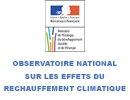Modelling Climate-Dependent Emerging Tropical Arboviruses
Modelling Climate-Dependent Emerging Tropical Arboviruses
Many new pathologies have emerged in recent decades. Others, longer-known, have extended their area of existence: both these types of diseases are referred to as “emerging” diseases. In this project, we will focus on emerging diseases of tropical origin, and more specifically on those believed to be fostered by climate change.
A large percentage of these so-called “emerging” diseases, whether AIDS, Nile Fever, Ebola or, going farther back in time, yellow fever, originate in wet tropical forests and present a long-standing, autonomous cycle there, namely the arbovirus cycles.
The emergence of new diseases from these cycles yet outside the forest environment can be due to four main causes:
- a) changes in the climate: climatology
- b) changes directly brought about by the climate on the ecosystems
- c) those resulting from modifications in their use by man (focal area: ecology)
- d) remote contamination due to the widespread use of transport
It is noteworthy that, in several cases (yellow fever and Nile Fever, for instance), the pathogenic agents were able to return to an autonomous cycle (agent, vector, reservoir, possible barriers) differing in many aspects from the original cycle, in particular, in vector and in reservoir. (focal area: the nature and physiology of the vectors)
In other cases, particularly the most recent, the pathogen agent has kept up such virulence (for instance, Ebola) that it has yet been unable to establish an autonomous cycle. Moreover, certain longer-known diseases, the cycle of which has long been solely anthropic (such as dengue, the sylvatic cycles of which – in Malaysia and Africa – are not relevant to man) are experiencing a change in their pathogen agent, sometimes toward a higher degree of danger (recent resurgence of mortal cases of non-hemorrhagic dengue) (focal area: pathogen evolution).
Diseases long-contained within a specific region of a continent are emerging in places safe up to this point, and are causing all the more devastation as the populations there do not have any immune history to the pathogen (focal area: distance and pathogen transport). In short, a whole mosaic of new epidemiological situations is emerging and the problems they raise are of paramount importance for the economy and, above all, human life. Climate change for anthropic reasons appears to play a significant part in this, and it is vital to achieve an overall understanding of climate-health interactions in order to foresee trends and endeavour to control their consequences (focal area: complex system modelling).
The proposed collaboration between teams specialised in climatology, modelling, tropical forest ecology and arbovirus and parasite diseases epidemiology, will help identify the conditions conducive to the emergence (“forest emergence” or zone extension) of these new pathologies and to delineate the risk areas; ultimately, the mechanistic models developed through this collaboration might be coupled with GISs (geographic information systems) supplied with remote detection data, in order to provide assistance in decision-making for preventive health policy (vector and vaccine control).
| Coordinators |
Marc Dubois, CEA – DRECAM/SPEC |
| Partnership |
CEA |
| Funding |
MEDD
|
| Budget |
130 000 € (including tax)
|




